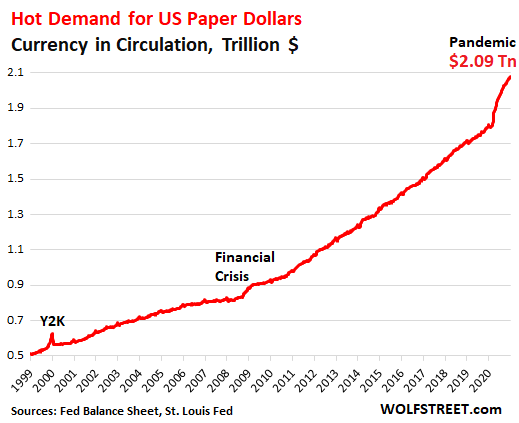Paper Dollars in Circulation Globally Spike amid Hot Demand. But a Mexican Bank, after Run-ins with the US, Can No Longer Unload its Hoard of Paper Dollars
Triggering a showdown — Government of Mexico v. Central Bank — over paper dollars, with ramifications in the US and globally.
The amount of “currency in circulation” – the paper dollars wadded up in people’s pockets and purses, stuffed under mattresses, or packed into suitcases and safes overseas – jumped again in the week ended December 30 to a new record of $2.09 trillion, according to the Federal Reserve’s balance sheet, where currency in circulation is a liability, not an asset. This was up by 16%, or by $293 billion, from February before the Pandemic. The amount has doubled since 2011:

This amount of currency in circulation is a function of demand – and that demand has been red hot: US Banks have to have enough paper dollars on hand to satisfy demand at ATMs and bank branches. Foreign banks will also request paper dollars from their correspondent banks in the US, or return unneeded cash to them.
When there is demand for paper dollars, banks buy more of them from the Fed. They pay for them usually with Treasury securities they hold or with excess reserves they have on deposit at the Fed.
The surge of paper dollars is a sign of hoarding, not of increased payments. In the US, the share of paper dollars for payments has been declining for years, replaced by electronic payment methods, such as credit and debit cards, PayPal, Zelle and similar systems, all kinds of smartphone-based payment systems, the automated clearinghouse (ACH) system, and checks every now and then.
During periods of uncertainty, people load up on cash, as they have done leading up to Y2K, during the Financial Crisis, and now during the Pandemic.
…click on the above link to read the rest of the article…